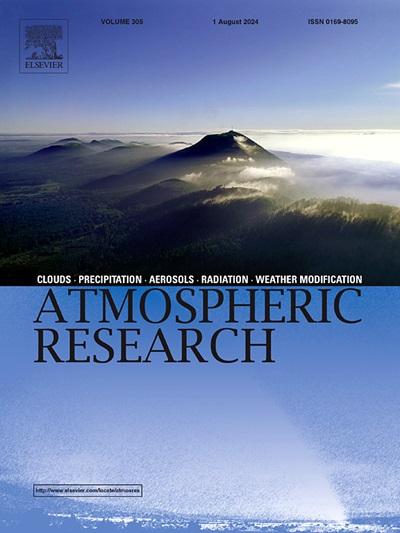Enhancing Air Pollution Forecasts in Cities by Characterizing the Urban Heat Island Effects on Planetary Boundary Layers
IF 4.5
2区 地球科学
Q1 METEOROLOGY & ATMOSPHERIC SCIENCES
引用次数: 0
Abstract
Rapid urbanization can cause serious air pollution and human health problems in densely populated cities. Urban areas have complex surface characteristics that can highly impact microclimate and air quality in these environments. Cities are typically warmer than their surroundings due to the Urban Heat Island (UHI) effect caused by anthropogenic activities and unique urban surface properties. However, the UHI impacts on air quality and aerosol forecasts in major cities have not been well understood yet. The objective of this paper is to address this knowledge gap by characterizing the impacts of the UHI on meteorological and aerosol forecasts in cities. To this end, more than 30 days of simulations over two major US cities (Houston and Dallas) are performed using the Weather Research and Forecasting (WRF) model coupled with Chemistry (WRF-Chem). In total, 78 simulations are conducted by varying the Planetary Boundary Layer (PBL) schemes, urban models, and various UHI magnitudes. Our results indicate that the current urban schemes in WRF do not accurately parameterize UHI effects which can highly influence their air pollution and meteorological forecasts. The lack of proper UHI representation causes a more stable atmosphere during nighttime as the model does not account for additional heating that occurs in major cities. This leads to the accumulation of aerosol forecasts on urban surfaces and overestimated particulate matter forecasts. By enhancing the UHI representation, we were able to remarkably improve the default WRF-Chem forecasts of particulate matter and ozone by an average of ∼50 % and ∼12 % in Houston, respectively. Similar improvements were obtained for Dallas, and different PBL and urban schemes. The study underscores the significance of urban-specific models such as the UHI effect for accurate meteorological and aerosol forecasts in cities.
求助全文
约1分钟内获得全文
求助全文
来源期刊

Atmospheric Research
地学-气象与大气科学
CiteScore
9.40
自引率
10.90%
发文量
460
审稿时长
47 days
期刊介绍:
The journal publishes scientific papers (research papers, review articles, letters and notes) dealing with the part of the atmosphere where meteorological events occur. Attention is given to all processes extending from the earth surface to the tropopause, but special emphasis continues to be devoted to the physics of clouds, mesoscale meteorology and air pollution, i.e. atmospheric aerosols; microphysical processes; cloud dynamics and thermodynamics; numerical simulation, climatology, climate change and weather modification.
 求助内容:
求助内容: 应助结果提醒方式:
应助结果提醒方式:


